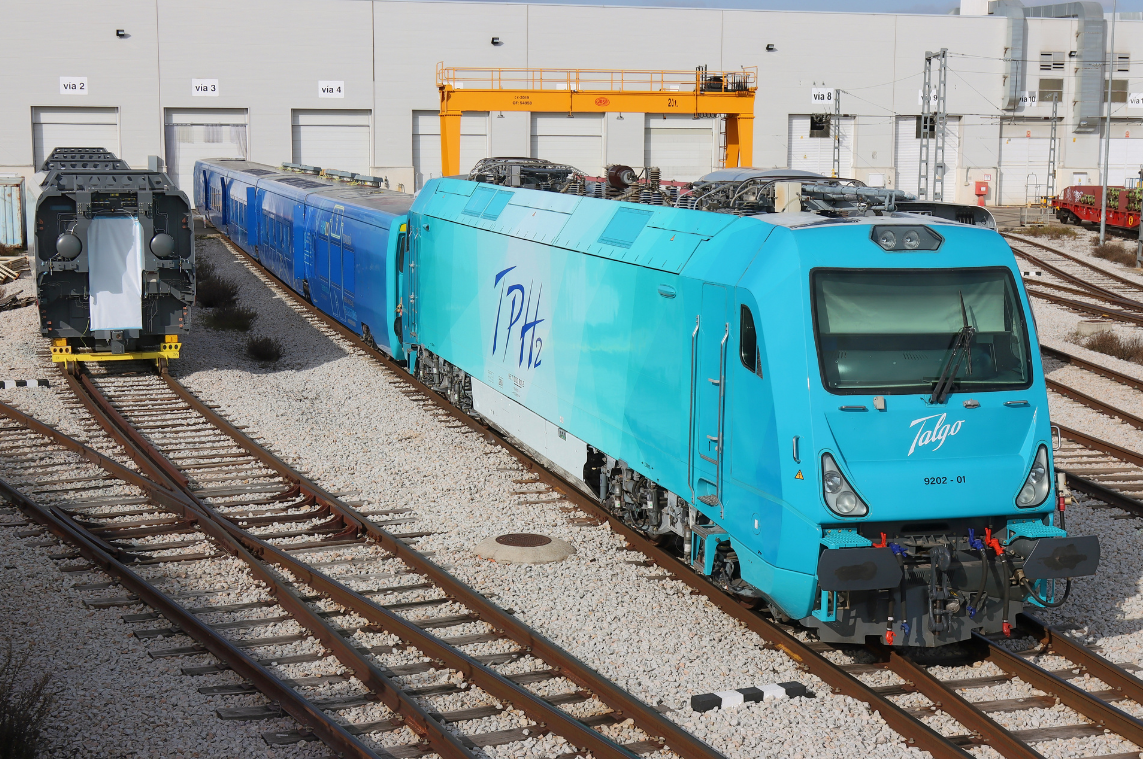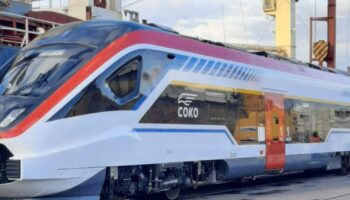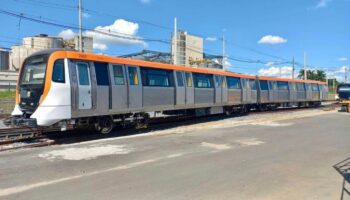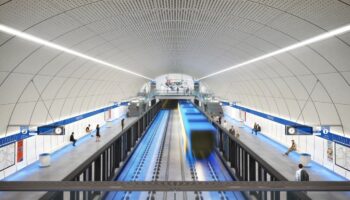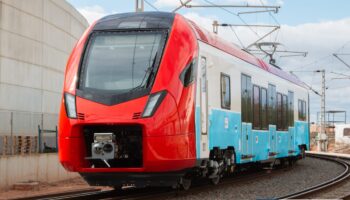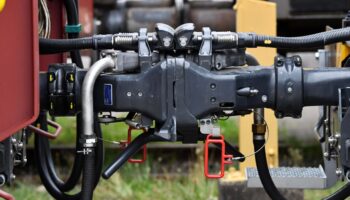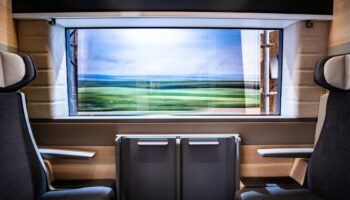EU: AERRL has published the first part of a study of diesel traction alternatives currently available on the market for freight and passenger trains. The research was ordered to the eolos consulting company and carried out with the support of AERRL, leasing companies Akiem, Beacon, Cargounit, and several major European banks. The Association of German Transport Companies, VDV, has spoken on the challenges the transition to alternative sources and electrification brings.
The study by AERRL and the consultants covers the regulatory framework of the EU and national policies and is based on interviews with European industry, freight and passenger operators, scientific institutions, and other organisations. The study had the aim to initiate a discussion of the most effective political leverage facilitating the implementation of low-carbon traction in the European Commission. The second part of the study to be made public later will present detailed calculations of the impact each solution has on the environment.
The relevance of the study stems from the EU’s ambition to become the first climate-neutral continent by 2050. This will require doubling the transport of goods by rail which now is responsible for less than 0.5% of the EU’s total CO₂ emissions, while around 50% of the European rolling stock still uses diesel. AERRL estimates that more than 10,000 diesel locomotives that have on average been in service for at least 20 years are in operation in the region now.
According to the researchers, electrification remains the best option even if building the infrastructure will require much investment and time. 40% of the European rail network responsible for 20% of traffic has not been electrified yet.
AERRL believes transition to hydrotreated vegetable oil (HVO) traction could be an intermediate solution. Using HVO does not require upgrading engines or refuelling stations, and its key advantage is the ease of adoption. When chosen, CO₂ emissions will be reduced by 85–90%. At the same time, a litre of HVO costs €30 more than diesel, and refuelling stations need to comply with standards depending on the type of fuel.
Biomethane and ammonia are seen as short- and medium-term solutions. Both options require the modernisation of rolling stock and the construction of refuelling infrastructure, and it will take five years to adapt ammonia for rolling stock traction. The eolos consultants refers to DiGas, Latvia, which tested partial replacement of diesel with gas on shunting locomotives. The solution proved to be technically feasible and cost-effective if local companies supply biomethane at an acceptable price.
According to AERRL, the most suitable solution in the long term is electric/battery traction which would reduce the electrification need by 26–50%. Although the researchers note that battery traction is highly efficient and has energy losses of only 20–30%, it cannot be applied to freight locomotives. Besides, many experts expect the future shortage of materials used to produce Li-ion batteries, for example, cobalt and lithium.
The authors recommend using hydrogen fuel cell rolling stock if other approaches are not economically viable. However, this option would require enough green hydrogen. Both hydrogen and ammonia are seen as long-term alternatives for freight traction rolling stock.
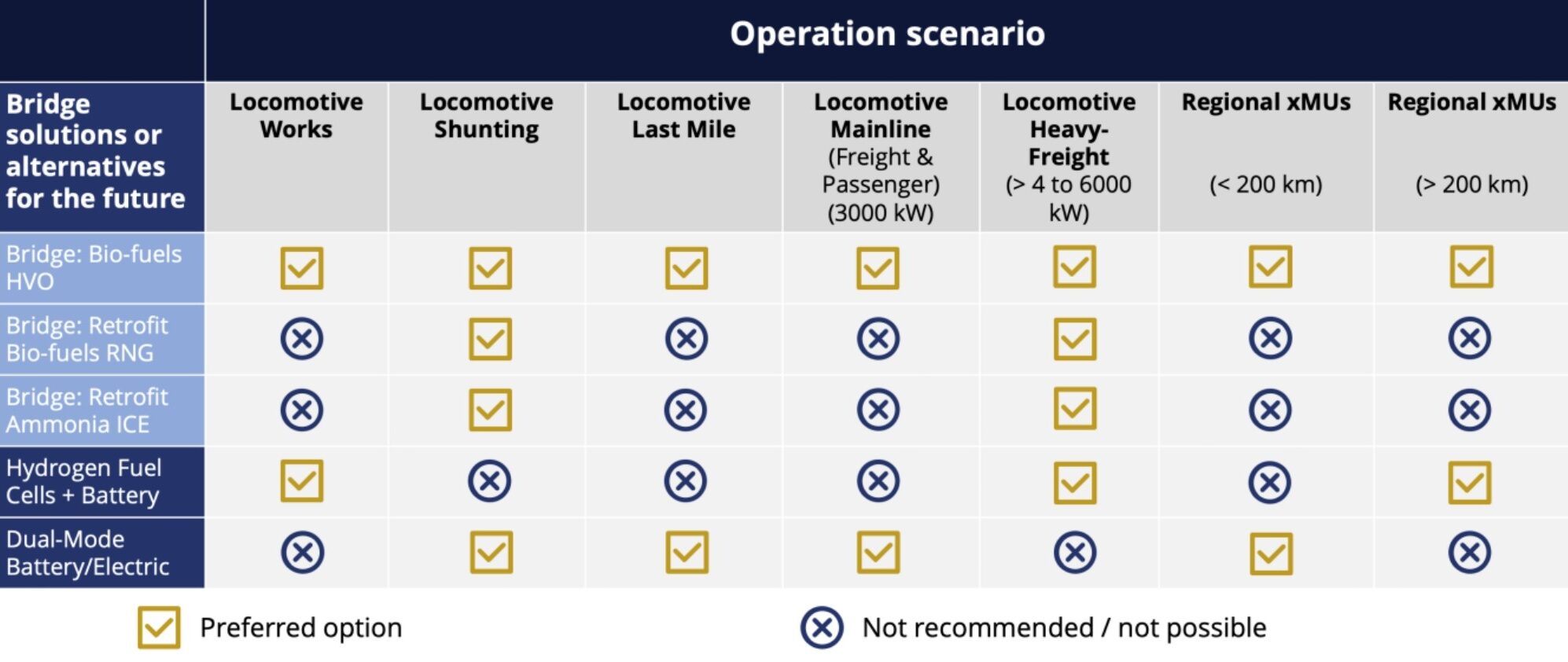 Recommendations on alternative fuels for various scenarios (enlarge). Source: AERRL
Recommendations on alternative fuels for various scenarios (enlarge). Source: AERRL
The last part of the published document is a roadmap for the near-term decarbonisation o the EU’s rail transport and the relevant regulatory measures. The authors offer to continue subsidising: electrification, development of production capacities for biofuel, the study of the adoption of biomethane and ammonia traction, and update of TSI technical specification requirements to consider alternative technologies in the future.
At the end of May, the European Parliament’s Committee on Transport and Tourism (TRAN) approved a new agreement. The document obliges EU countries to submit draft national policies on the development of the alternative fuel market for the transport sector and on the deployment of appropriate infrastructure to the European Commission by 1 January 2025. The agreement also requires that the introduction of rolling stock using alternative traction be evaluated for those parts of the railroad network that cannot be fully electrified for technical or cost-efficiency reasons.
On the other hand, as the production of alternative fuels expands slowly and other factors influence, VDV expects the shortage of these fuels by 2030. The association emphasises that the energy transition could trigger significant growth in energy prices. “As a great share of operating costs is in energy, companies are expected to pay more attention to the technologies to be introduced”, VDV Vice President Veit Salzmann said in April. VDV also reminds that labour scarcity and complex approval procedures for construction slow down the electrification.





